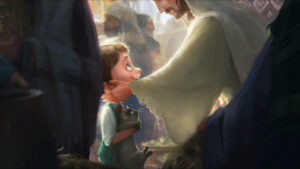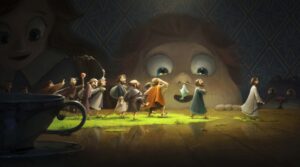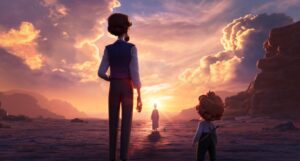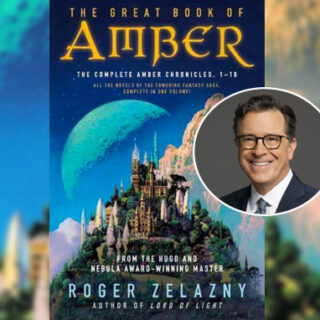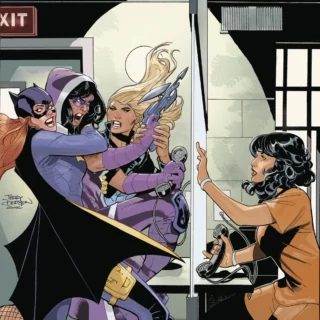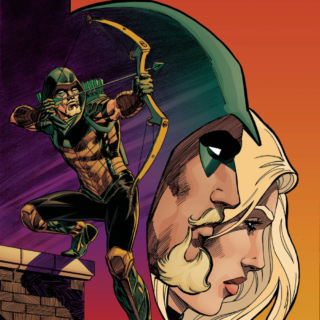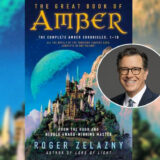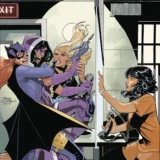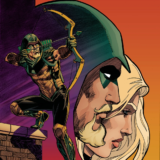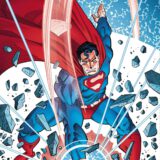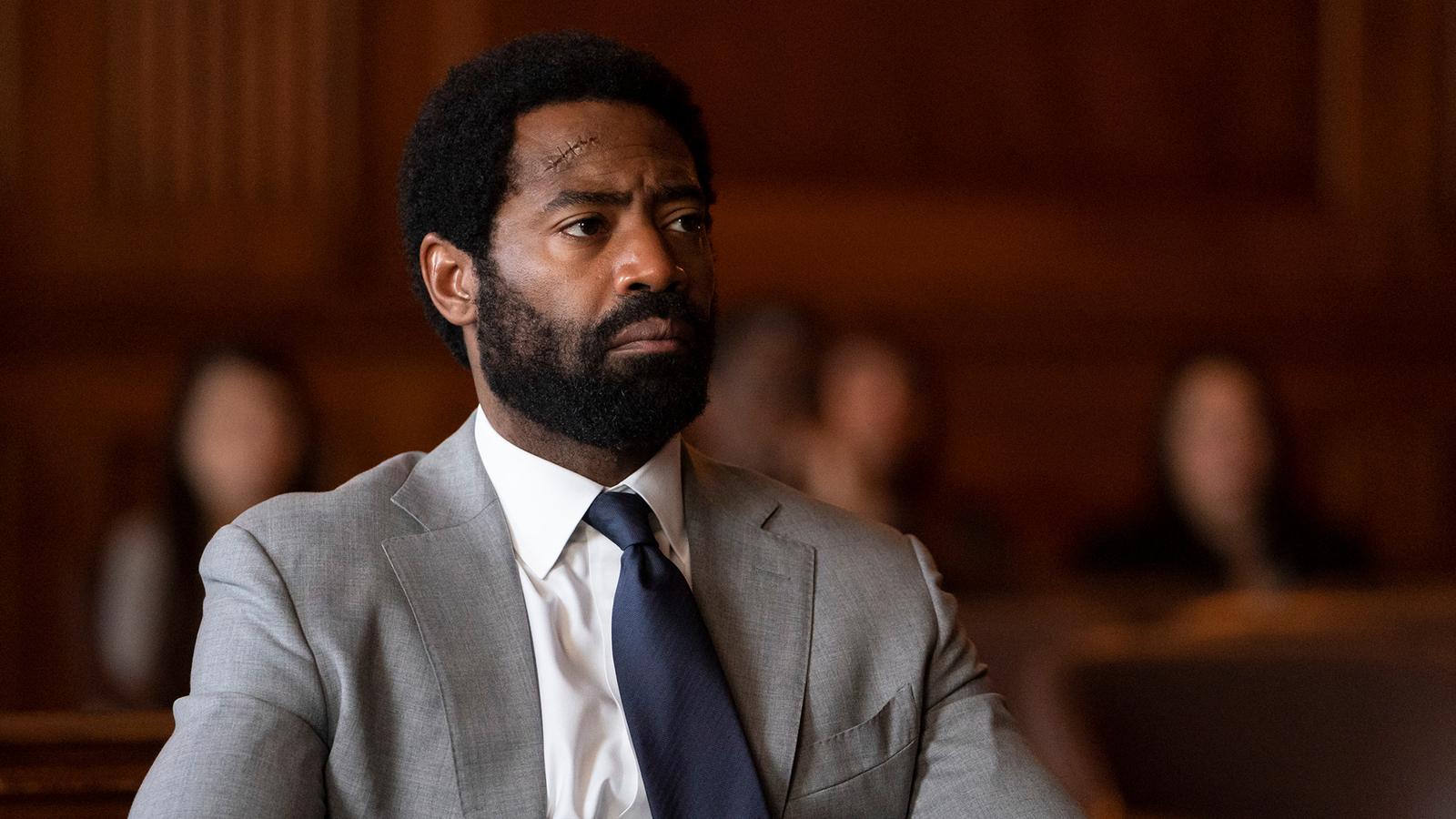CULVER CITY, Calif. (July 16, 2024) – Celebrate 100 years of Columbia Pictures and complete your Columbia Classics collection as Sony Pictures Home Entertainment proudly debuts six more iconic films from its library on 4K Ultra HD disc for the first time ever, exclusively within the COLUMBIA CLASSICS 4K ULTRA HD COLLECTION VOLUME 5, available October 1. This must-own set includes a variety of powerful and moving award-winning favorites: ALL THE KING’S MEN, ON THE WATERFRONT, A MAN FOR ALL SEASONS, TOOTSIE, THE AGE OF INNOCENCE and LITTLE WOMEN (2019). Each film is presented in 4K resolution with Dolby Vision High Dynamic Range, and five of the films include immersive Dolby Atmos mixes.
The six films in the COLUMBIA CLASSICS 4K ULTRA HD COLLECTION VOLUME 5 are only available on 4K Ultra HD disc within this special limited edition collector’s set. Included with the collection is a gorgeous hardbound 80-page book, featuring in-depth sections about the making of each film within the set via six all-new incisive essays from renowned writers and journalists, plus rare photos from deep within the Columbia Pictures archives. The set also includes hours of special features across the films, including memorable glimpses behind the scenes, in-depth feature commentaries, an all-new discussion featuring filmmaker Greta Gerwig and star Saoirse Ronan reflecting on LITTLE WOMEN, and much more! Plus, as part of the Columbia 100th celebration, the set includes an exclusive bonus disc highlighting four rare Columbia films from the 1920s, with several presented in full 4K resolution!
The six main feature films will also be available for purchase at digital retailers in 4K with HDR, and the physical set includes Movies Anywhere redemption codes for each film. With redemption of the Movies Anywhere codes, the movies are available in your digital collection, across your linked and participating digital accounts, to enjoy at home or on the go.
ALL THE KING’S MEN
Synopsis:
In a bravura performance, Broderick Crawford won the 1949 Academy Award® for Best Actor with his stunning portrayal of bull-headed, backwoods lawyer Willie Stark, in this powerful drama about political and personal corruption. A somber but realistic chronicle of raw, brutal power in force, All The King’s Men is based on Robert Penn Warren’s Pulitzer Prize-winning novel of the same name and won Best Picture of 1949. Celebrating its 75th anniversary.
ALL THE KING’S MEN Disc Breakdown
4K Ultra HD Includes:
Feature presented in 4K resolution with Dolby Vision
Mono DTS-HD Master Audio
Blu-ray Includes:
Feature presented in high definition, sourced from the 4K master
Mono DTS-HD Master Audio
Special Features:
NEW: Audio Commentary Featuring Film Historians Julie Kirgo and Peter Hankoff
NEW: Force of Will: The Making of All The King’s Men Featurette
Theatrical Trailer
ALL THE KING’S MEN has a run time of approximately 109 minutes and is not rated.
ON THE WATERFRONT
Synopsis:
Marlon Brando gives one of the screen’s most electrifying performances in his Oscar®-winning role as Terry Malloy in On the Waterfront (Best Picture, 1954). Ex-fighter Malloy (Brando) could have been a contender but now toils for boss Johnny Friendly (Lee J. Cobb) on the gang-ridden waterfront. Terry is guilt-stricken, however, when he lures a rebellious worker to his death. But it takes the love of Edie Doyle (Eva Marie Saint), the dead man’s sister, to show Terry how low he has fallen. When his crooked brother Charley the Gent (Rod Steiger) is brutally murdered for refusing to kill him, Terry battles to crush Friendly’s underworld empire. Directed by Elia Kazan (A Streetcar Named Desire) and written by Budd Schulberg (What Makes Sammy Run?), this unforgettable drama about Terry’s redemption is among the most acclaimed of all films. Celebrating its 70th anniversary.
ON THE WATERFRONT Disc Breakdown
4K Ultra HDs Include:
Feature presented in 4K resolution with Dolby Vision, restored from the original camera negative
3 separate 4K presentations of the film, with 1.66, 1.37 and 1.85 aspect ratios, plus noted audio options
Dolby Atmos English audio
5.1 DTS-HD Master Audio
Mono DTS-HD Master Audio
Blu-ray Includes:
Feature presented in high definition at 1.66 aspect ratio, sourced from the 4K master
5.1 DTS-HD Master Audio
Mono DTS-HD Master Audio
Special Features:
NEW: Budd Schulberg: A Righteous Indignation Featurette
NEW: Boris Kaufman: A Vision Beyond Borders Featurette
Audio Commentary Featuring Critic Richard Schickel and Film Historian Jeff Young
Contender: Mastering the Method Featurette
Interview with Director Elia Kazan
Martin Scorsese and Kent Jones Featurette
Eva Marie Saint Interview
Thomas Hanley Interview
On the Aspect Ratio
Stills Gallery
Theatrical Trailer
ON THE WATERFRONT has a run time of approximately 108 minutes and is not rated.
A MAN FOR ALL SEASONS
Synopsis:
Winner of six 1966 Academy Awards® including Best Actor, Best Director and Best Picture! Sir Thomas More (Paul Scofield), England’s Roman Catholic Chancellor, is forced into a difficult position when corrupt King Henry VIII (Robert Shaw) demands his approval to divorce his wife and marry his mistress. Torn between his conscience and duty to the crown, Sir Thomas chooses to say nothing, sparking the rage of the king. What unfolds is a battle of wills packed with palace intrigue, political brinksmanship and the fate of man, church and country. In the end, his silence spoke loudest of all.
A MAN FOR ALL SEASONS Disc Breakdown
4K Ultra HD Includes:
Feature presented in 4K resolution with Dolby Vision, restored from the original camera negative
Dolby Atmos English audio
5.1 DTS-HD Master Audio
Mono DTS-HD Master Audio
Blu-ray Includes:
Feature presented in high definition, sourced from the 4K master
5.1 DTS-HD Master Audio
Mono DTS-HD Master Audio
Special Features:
Audio Commentary Featuring Lem Dobbs, Julie Kirgo and Nick Redman
NEW: Moral Clarity with Bishop Robert Barron Featurette
The Life of St. Thomas More Featurette
Theatrical Trailer(s)
A MAN FOR ALL SEASONS has a run time of approximately 120 minutes and is rated G.
TOOTSIE
Synopsis:
Michael Dorsey is a talented actor, but his demanding nature and stubborn temperament have antagonized every producer in New York. Now his agent insists no one will hire him. But Michael needs money – eight thousand dollars to be exact – and to earn it, he’s willing to play the role of a lifetime. Dustin Hoffman stars with Jessica Lange, Teri Garr, Dabney Coleman, Charles Durning, Bill Murray and Geena Davis in director Sydney Pollack’s heart-filled classic that heralded a new era of Hollywood wig-flipping and set a new standard for unpredictable laugh-out-loud comedy.
TOOTSIE Disc Breakdown
4K Ultra HD Includes:
Feature presented in 4K resolution with Dolby Vision, restored from the original camera negative
Dolby Atmos English audio
5.0 DTS-HD Master Audio
Mono DTS-HD Master Audio
Blu-ray Includes:
Feature presented in high definition, from the 4K master
5.0 DTS-HD Master Audio
Mono DTS-HD Master Audio
Special Features:
NEW: Audio Commentary with Film Critic Cerise Howard & Filmmaker Rohan Spong
A Better Man: The Making of Tootsie 3-Part Documentary
Dustin Hoffman Interview
9 Deleted Scenes
Screen Test Footage
Theatrical Trailer
TOOTSIE has a run time of approximately 116 minutes and is rated PG.
THE AGE OF INNOCENCE
Synopsis:
Martin Scorsese, one of the great directors of our time, directs Oscar®-winner Daniel Day-Lewis (Best Actor – 1989, My Left Foot; 2007, There Will Be Blood; 2012, Lincoln), Michelle Pfeiffer and Winona Ryder in a brilliant adaptation of Edith Wharton’s Pulitzer Prize-winning novel. A ravishing romance about three affluent New Yorkers caught in a tragic love triangle, the ironically-titled story chronicles the grandeur and hypocrisy of high society in the 1870s. At the center of the film is Newland Archer (Day-Lewis), an upstanding attorney who secretly longs for a more passionate life. Engaged to the lovely but ordinary socialite May Welland (Ryder), Newland resigns himself to a life of quiet complacency. But when May’s unconventional cousin returns to New York amid social and sexual scandal, Newland risks everything for a chance at true love. The Age of Innocence is a spellbinding portrait of hidden romance and regret.
THE AGE OF INNOCENCE Disc Breakdown
4K Ultra HD Includes:
Feature presented in 4K resolution with Dolby Vision, restored from the original camera negative
Dolby Atmos English audio
High Dynamic Range and Dolby Atmos audio approved by editor Thelma Schoonmaker
5.1 DTS-HD Master Audio
2-Channel Surround DTS-HD Master Audio
Blu-ray Includes:
Feature presented in high definition, sourced from the 4K master
5.1 DTS-HD Master Audio
2-Channel Surround DTS-HD Master Audio
Special Features:
Martin Scorsese Interview
Jay Cocks Interview
Original 1993 Making-Of
Moments from Set: B-Roll
Theatrical Trailer
THE AGE OF INNOCENCE has a run time of approximately 138 minutes and is rated PG for thematic elements and some mild language.
LITTLE WOMEN
Synopsis:
Writer-director Greta Gerwig (Lady Bird) has crafted a Little Women that draws on both the classic novel and the writings of Louisa May Alcott, and unfolds as the author’s alter ego, Jo March, reflects back and forth on her fictional life. In Gerwig’s take, the beloved story of the March sisters – four young women each determined to live life on their own terms – is both timeless and timely. Portraying Jo, Meg, Amy, and Beth March, the film stars Saoirse Ronan, Emma Watson, Florence Pugh, Eliza Scanlen, with Timothée Chalamet as their neighbor Laurie, Laura Dern as Marmee, and Meryl Streep as Aunt March.
LITTLE WOMEN Disc Breakdown
4K Ultra HD Includes:
Feature presented in 4K resolution with Dolby Vision
Dolby Atmos English audio
5.1 DTS-HD Master Audio
Special Features:
NEW: Audio Commentary Featuring Writer / Director Greta Gerwig and Saoirse Ronan
NEW: Revisiting Little Women: A Conversation with Greta Gerwig and Saoirse Ronan
Theatrical Trailer
Blu-ray Includes:
Feature presented in high definition, sourced from the 4K master
5.1 DTS-HD Master Audio
Special Features:
A New Generation of Little Women Featurette
Making a Modern Classic Featurette
Greta Gerwig: Women Making Art Featurette
Hair & Make-Up Test Sequence
Little Women Behind the Scenes
Orchard House, Home of Louisa May Alcott
LITTLE WOMEN has a run time of approximately 135 minutes and is rated PG for thematic elements and brief smoking.
EXCLUSIVE BONUS DISC INCLUDES:
Four rare 1920s feature films from the Columbia Pictures library:
The Belle of Broadway (1926) – presented in HD resolution
Ladies of Leisure (1926) – presented in 4K resolution (SDR)
The Desert Bride (1928) – presented in 4K resolution (SDR)
The Scarlet Lady (1928) – presented in 4K resolution (SDR)
Academy Award® and Oscar® are the registered trademarks and service marks of the Academy of Motion Picture Arts and Sciences.
CAST AND CREW
Produced and Directed By: Brian De Palma
Story By: Brian De Palma
Screenplay By: Robert J. Avrech and Brian De Palma
Cast: Craig Wasson, Gregg Henry, Melanie Griffith
SPECS
Run Time: Approx. 114 minutes
Rating: R
4K UHD Feature Picture: 2160p Ultra High Definition, 1.85:1
4K UHD Feature Audio: English Dolby Atmos (Dolby TrueHD 7.1 Compatible) | English 5.1 DTS-HD MA | English 2-Channel Surround DTS-HD MA
